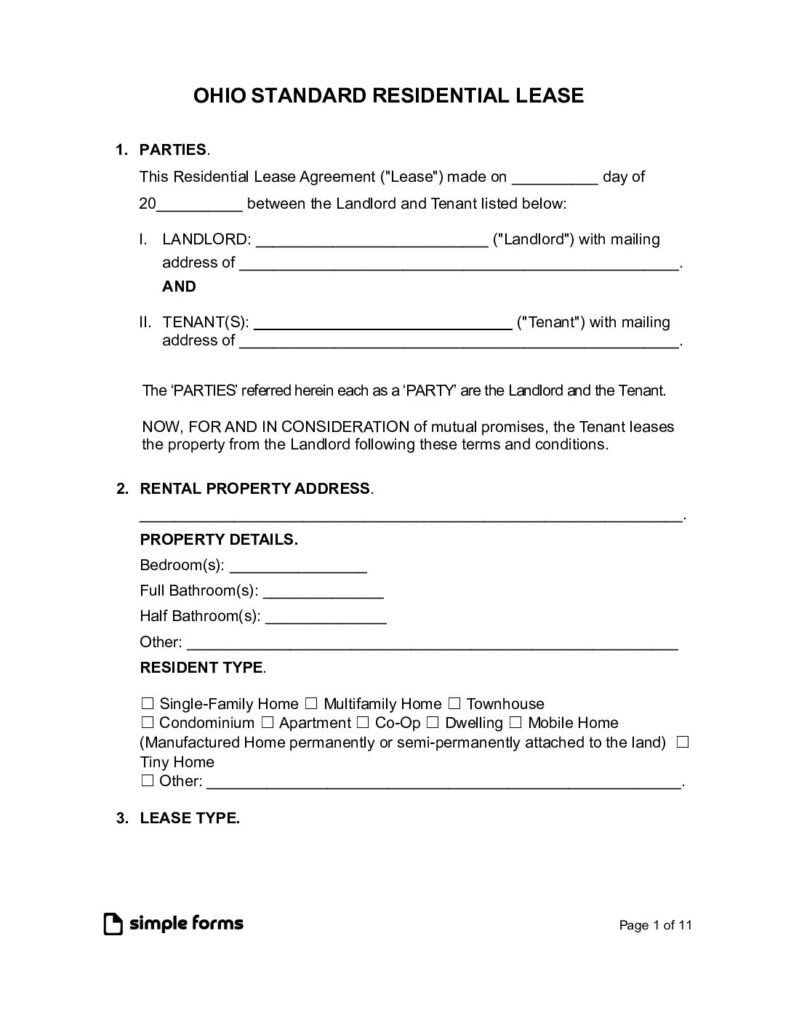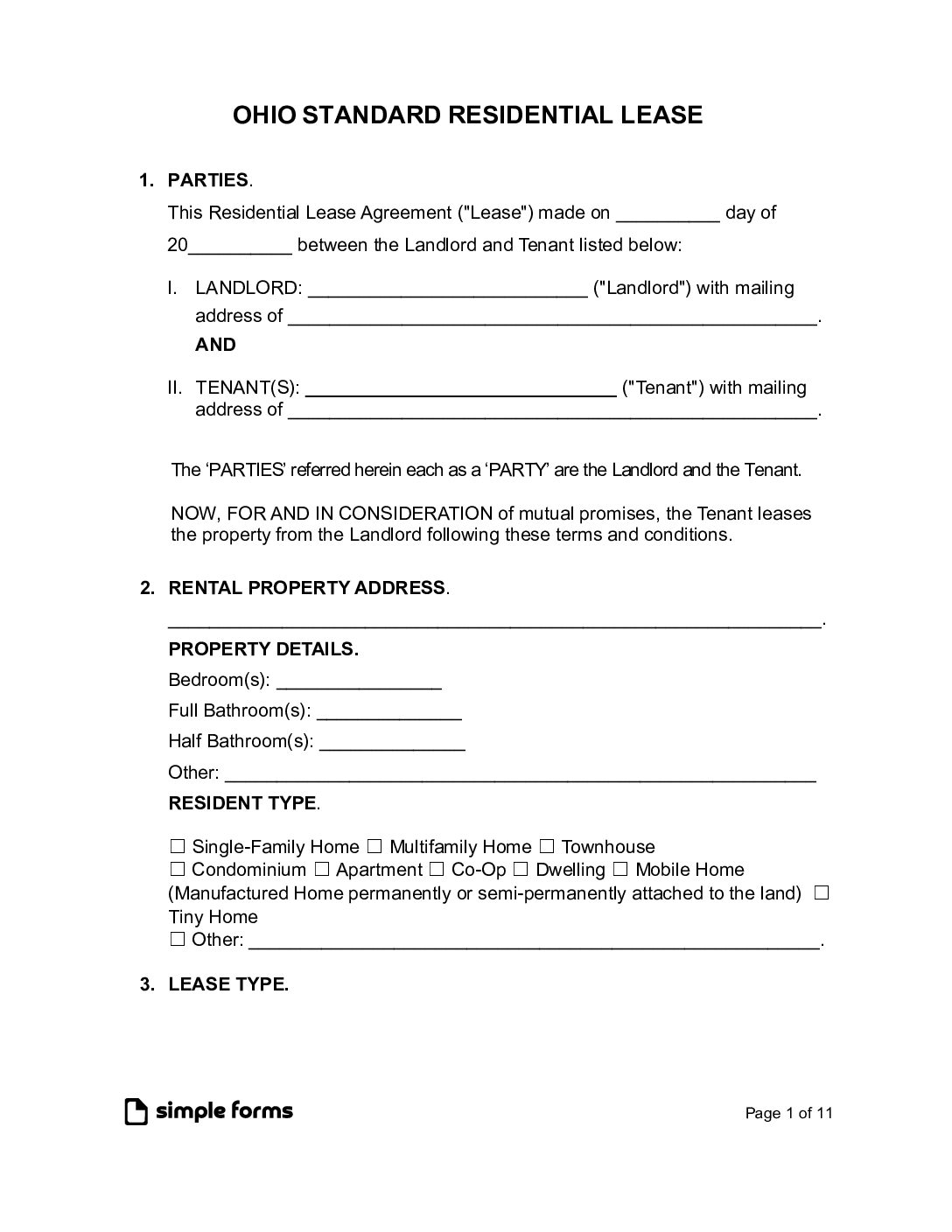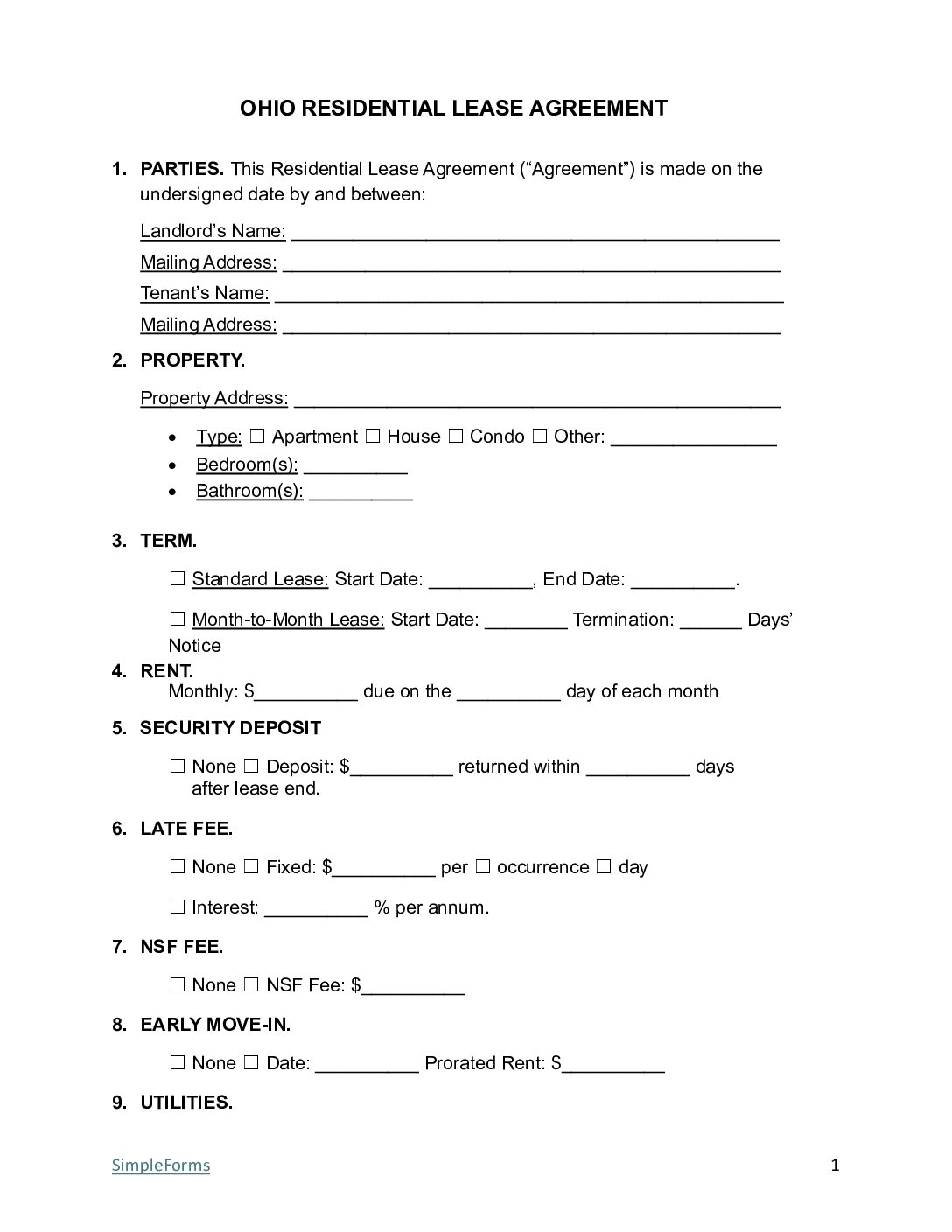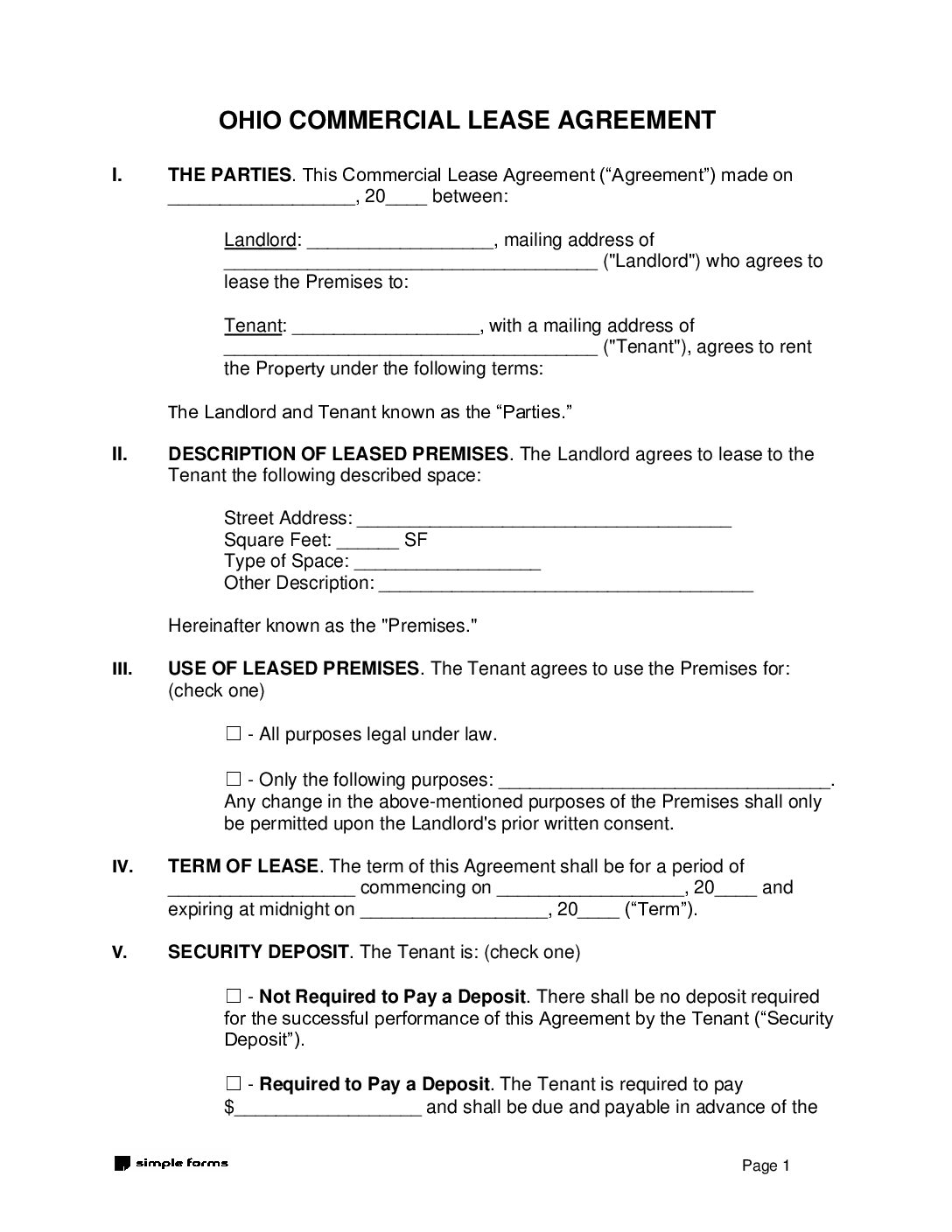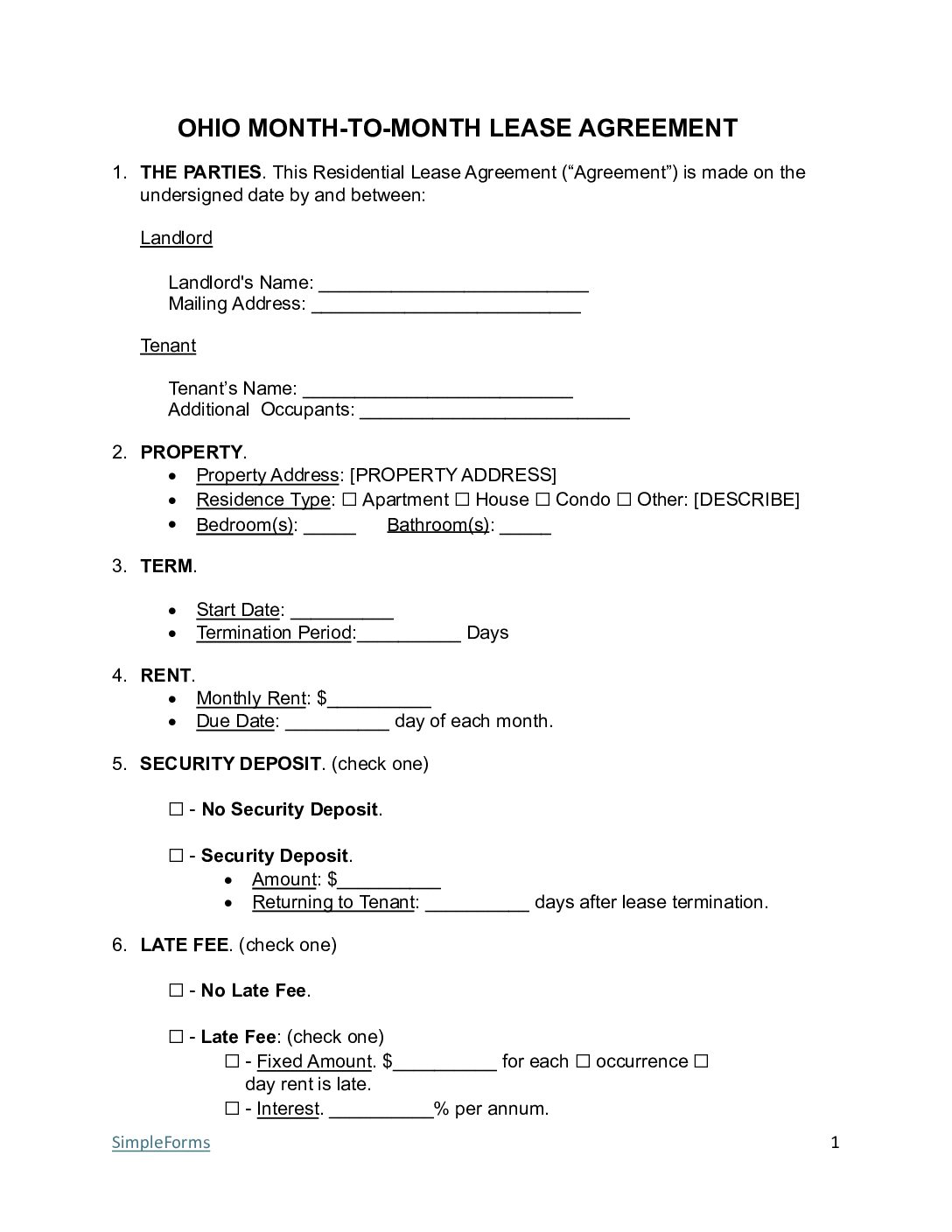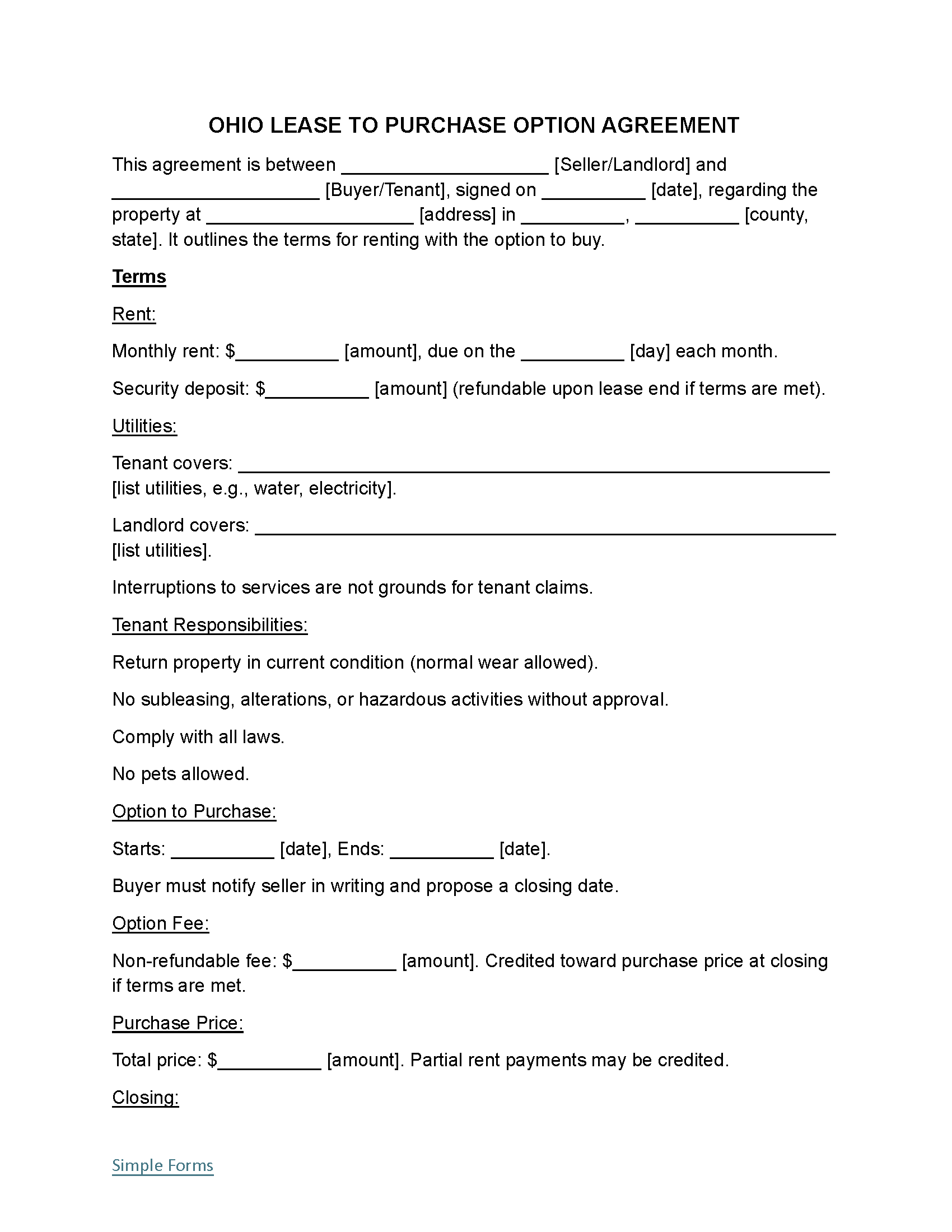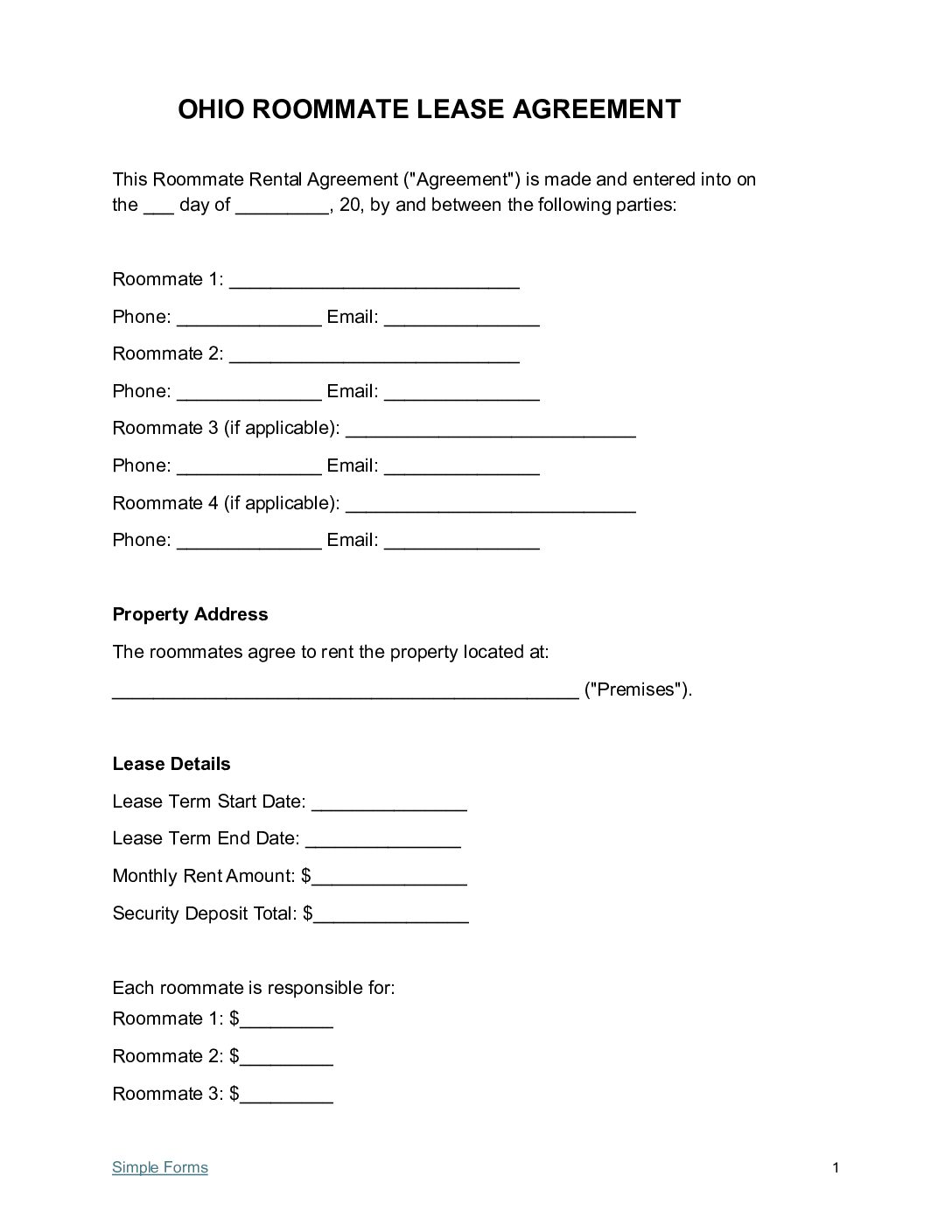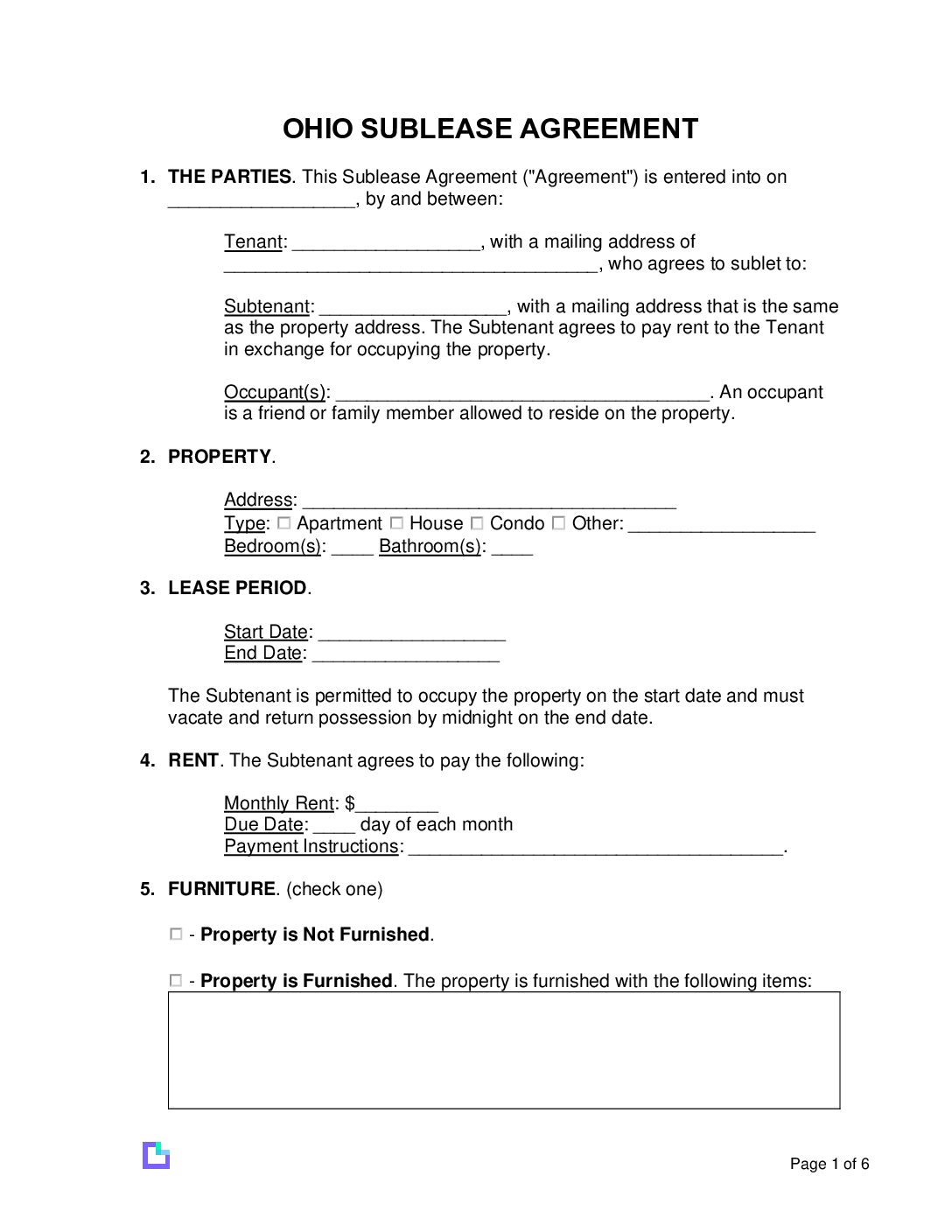By Type (6)
| Residential Lease Agreement – A fixed-term lease that lasts 12 months but can be set for any length of time agreed on by the landlord and tenant. Download: PDF | Word (.docx) |
|
| Commercial Lease Agreement – A contract for renting space used for business, like offices, stores, or warehouses. Download: PDF |
|
| Month-to-Month Lease Agreement – A flexible rental contract that renews each month until either party gives 30 days’ written notice to end it. It’s ideal for short-term or uncertain housing needs.
|
|
| Rent to Own Lease Agreement – A lease that includes an option for the tenant to purchase the property. Download: PDF | Word (.docx) |
|
| Roommate Lease Agreement – Made for people sharing a home, where each person has their own bedroom and shares the common areas. Download: PDF | Word (.docx) |
|
| Sublease Agreement – An agreement between a tenant and subtenant, where the subtenant takes over the lease with the landlord’s approval and must follow all terms of the original lease. Download: PDF | Word (.docx) |
What does the Ohio rental lease agreement form cover?
This Ohio Lease Agreement includes Ohio landlord-tenant laws. Landlords must maintain properties and keep up with local housing codes, return security deposits, and give advance notice to tenants before entry.
This agreement form includes the following:
- Ohio Residential Landlord-Tenant Act
- Security Deposit Law
- Lease Termination
- Landlord’s Access to the Property
- Rent Due Date plus Late Fees
- Eviction Procedures
- Property Maintenance
- Tenant Rights
- Rent Control
- Discrimination Protections
- Habitability Standards
- Utilities and Services
- Required Disclosure Forms
Ohio Residential Landlord-Tenant Act
The Ohio Residential Landlord-Tenant Act, in Chapter 5321 of the Ohio Revised Code, outlines the rights and responsibilities of landlords and tenants. [1]
Security Deposit Law
- 30 Days – Landlords must return the deposit to tenants within 30 days of the lease end date.[2]
- Itemized List – Deductions must be itemized by the landlord and shared with the tenant.
- Maximum – The maximum amount is equal to the total amount of three (3) months’ rent.
- Interest on Security Deposits – Landlords are not required to collect or pay interest on security deposits.
Lease Termination
Both landlords and tenants can terminate a lease under the following conditions:
- Landlord’s Ability to Terminate
- 3-day notice for nonpayment of rent.
- 7-day notice to correct lease violations.
- Tenant’s Ability to Terminate
- Tenants may terminate for reasons such as habitability issues after proper notice to the landlord.
- 30-day notice required for month-to-month leases.[3]
Landlord’s Access to Property
Due Dates / Late Fees
- Grace Period – Three-day grace period. If rent isn’t paid, a five-day notice to quit can be issued.
- Maximum Late Fee – The landlord can charge up to 5% of the monthly rent.
- NSF Fee – $25 per bounced check.
- Withholding Rent – If the landlord doesn’t maintain the property, tenants can make repairs and deduct up to one (1) month’s rent.
Eviction Procedures
Property Maintenance
Landlords are required to maintain the property in a habitable condition and respond promptly to repair requests.[7]
Tenant Rights
Ohio tenants have legal rights, including:
- Right to Privacy – Tenants are entitled to privacy in their rental unit.
- Right to Habitable Housing – The property must meet health and safety standards.[8]
Rent Control
Ohio does not have rent control laws, allowing landlords to set rents according to the market.
Discrimination Protections
The Fair Housing Act (FHA) prevents landlords from discriminating against tenants based on race, color, national origin, religion, sex, disability, and/or familial status (having children under 18, including pregnancy).
Habitability Standards
Rental properties must meet basic habitability standards, including:
- Functional plumbing, heating, and electrical systems.
- Safe and sanitary living conditions.
Utilities and Services
Landlords cover basic utilities unless stated otherwise in the lease.
Required Disclosure Forms (1)
The following are required by the landlord to disclose to tenants:
- Lead-Based Paint Disclosure & EPA Pamphlet – If the property was built before 1978, the landlord must inform the tenant about lead paint and provide an EPA pamphlet.
Sample Ohio Rental Lease Template
Ohio-Standard-1-Year-Residential-Lease-Agreement
